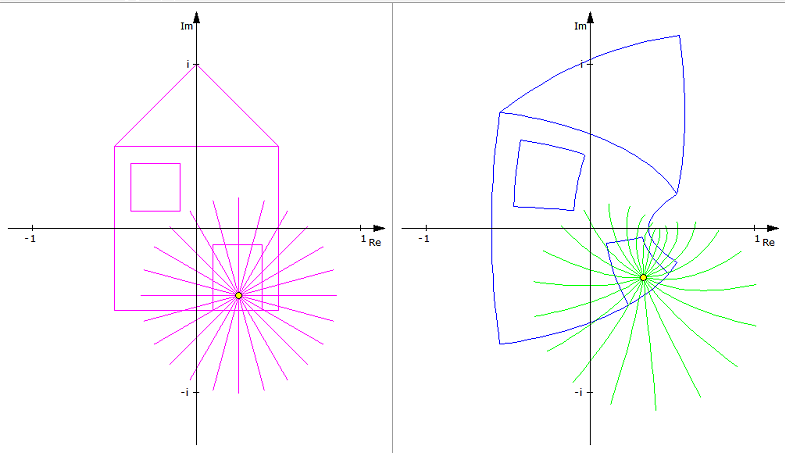Normally, the focus plane is 90 degree to the optical axis. This is due to symmetry reasons.
A problem arises when two objects have so different distances, that they can not be focussed at the same time.

Theodor Scheimpflug had a genius idea : lets tilt the camera!

Then all point in the A-B-plane will be focussed!
Just tilting the camera of course is not enough, to get a focussed image. The Gaussian focus equation also must be satisfied.
The Gauss equation is however equivalent to the second Scheimpflug priciple.
First Scheimpflug principle:
Three planes must share a common line:
- The tilted plane containing the desired objects
- The sensor plane
- A plane perpendicular to the optical axis of the lens.
For a theoretical “thin lens” (=of virtual length 0) , it’s clear where this plane is. For the exact location in a real world lens, see below.
For a mind game lets keep the sensor plane and the object plane fixed and non-parallel. This defines a shared common line in 3D space. Through each line in Space there is an infinite number of Planes, containing it.
Obviously not all can be the plane of best focus.
Say:
The first Scheimpflug principle is just a necessary condition, but not a sufficient condition to get a focussed image of a tilted object plane on the sensor.
In general the lens is tilted, but the image not focussed.
However, as soon as wwe use the lens focus mechanism, the first Scheimpflug principle is not satisfied any more, we would have to tilt the lens a little to satisfy the first criterion, but then the image is not focussed any more, etc.
The second (sufficient) condition can be the
Gauss focus equation:

But instead of the Gauss focus equation we can use the
Second Scheimpflug principle:
These three planes must share a common line:
- The tilted plane containing the desired objects
- A plane through the lens center, parallel to the sensor plane
- A plane perpendicular to the optical axis of the lens shifted by the focal length.
Situations & Applications where to use the Scheimpflug principle:
- Objects to be focussed have a various vertical distances from the camera (a poster at the wall, the facade of a building with the camera viewing upwards or a document on a table distant from the camera
- The camera can not be mounted where it should be (because for example to stay out of the way of a robot)
- The cameras looks at an angle to a more or less flat object
- Cameras for autonomous vehicles taht have to follow lines or signs on the floor
- Whenever the desired plane of focus is not parallel to the camera sensor
- Laser-Triangulation
The following interactive drawing is just for illustration purposes!
Usage: First place the object center (the green dot, the spot where the optical axis meets the object) at a local you like , for example at 60 on the x-axis.
Them move the lens (the other green dot) to a location where it’s possible to place the camera-lens position.
The interactive graphic keeps the optical axis in the center of the lens and maps the edges of the sensor to the wanted object plane.
The magnification if measured perpendicular(!) to the optical axis.
Keep in mind, that on your monitor you’ll see a trapezoid / trapezium)
